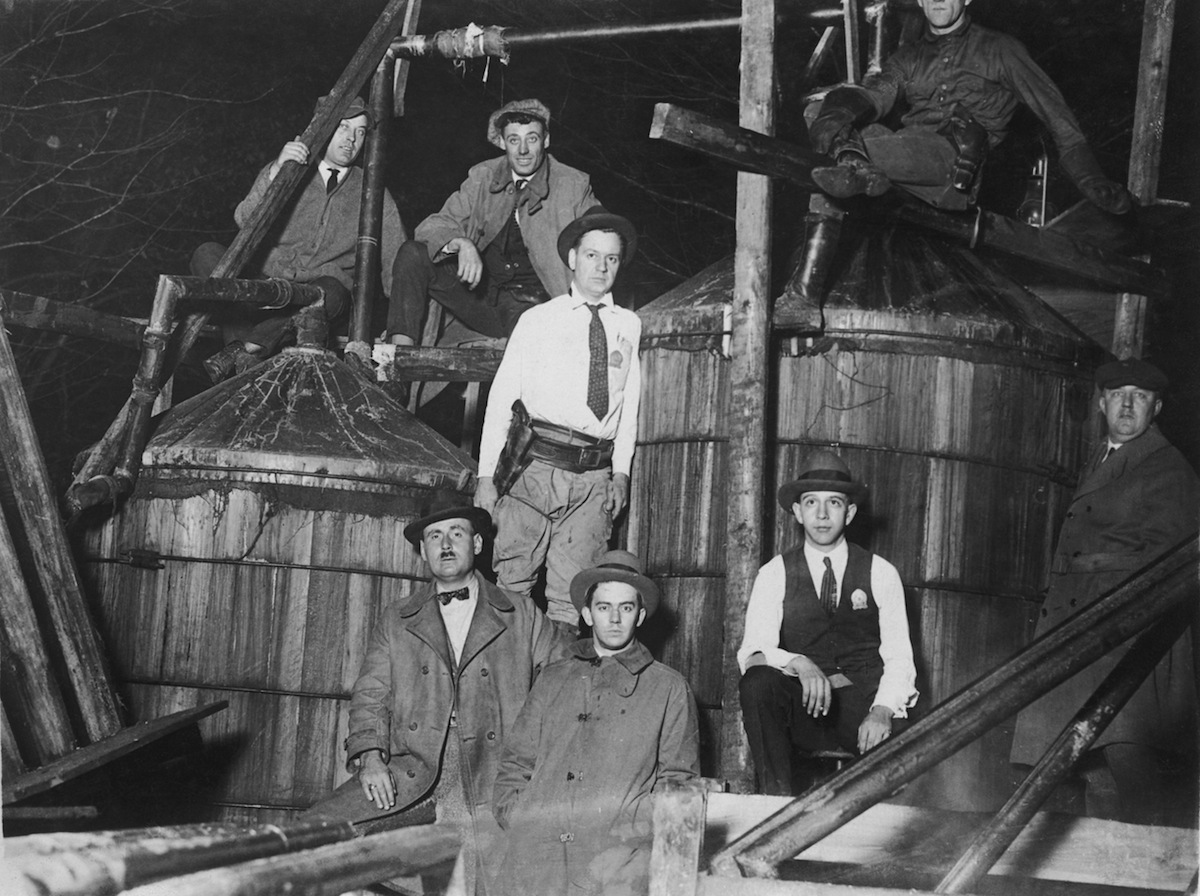
This week, two strange spates of death-by-drinking made news, when dozens of people died from drinking possibly-poisoned beer in Mozambique and another large group was struck down by bad liquor in India. The idea of “poisoned” or contaminated unlicensed alcohol may strike American readers as a problem for people elsewhere in the world to worry about, but the U.S. actually has an extensive history with deaths from poisoned alcohol — and that’s not to mention the thousands of deaths a year that, even today, can be traced to alcohol poisoning from supposedly safe, legal drinks.
Whether the deaths occur in 2012 in Prague or in 1922 in New York, stories about “poison” alcohol tend to be about moonshine that contains methanol. Methanol (wood alcohol) appears in many industrial products, like formaldehyde and fuel, that are cheaper and stronger than ethanol (the alcohol you drink); it’s also really toxic. Whether it’s sold to drinkers on purpose to bring down the cost of producing booze or accidentally, by a well-meaning but ignorant moonshiner, drinking methanol can lead to blindness, respiratory paralysis or death. That’s true around the world and across the decades.
But there is one way in which Prohibition-era alcohol deaths differed from those that make news today: in the 1920s, the U.S. government was, in a way, responsible for the poison.
Here’s what happened: as Slate‘s recounting of the situation explains it, the whole thing started when Prohibition began in 1920. Despite the new law, unsurprisingly, people kept drinking. As speakeasies and underground liquor sales boomed, the people who were already drinking began, in many cases, drinking even more–a trend made possible because, even though imports had been curtailed by law enforcement, those who wanted to sell alcohol could just re-distill the commcerial-use alcohol that was still readily available in the U.S.
For years, that industrial alcohol had been “denatured” by adding toxic or unappetizing chemicals to it — the idea was originally so that people couldn’t escape beverage taxes by drinking commercial-use alcohol instead — but it was still possible to re-purify the liquid so that it could be consumed.
So, as TIME reported in the Jan. 10, 1927, issue, a solution emerged from the anti-drinking forces in the government: that year, a new formula for denaturing industrial-grade alcohol was introduced, doubling how poisonous the product became. The new formula included “4 parts methanol (wood alcohol), 2.25 parts pyridine bases, 0.5 parts benzene to 100 parts ethyl alcohol” and, as TIME noted, “Three ordinary drinks of this may cause blindness.” (In case you didn’t guess, “blind drink” isn’t just a figure of speech.)
Not everyone thought it was a good idea to make alcohol deadly, when making it illegal hadn’t stopped drinkers, and New Jersey Senator Edward I. Edwards called it “legalized murder.” However, the Anti-Saloon League persisted, arguing that legal alcohol had killed many more in its day than denatured alcohol would kill during the transition to a teetotaling world. “The Government is under no obligation to furnish the people with alcohol that is drinkable when the Constitution prohibits it,” said advocate Wayne B. Wheeler. “The person who drinks this industrial alcohol is a deliberate suicide… To root out a bad habit costs many lives and long years of effort…”
The government made no attempt to pretend that increasing the denaturing formula wouldn’t lead to deaths. Later that year, Seymour M. Lowman, Assistant Secretary of the Treasury in charge of Prohibition, even told citizens that the fringes of society that drink were “dying off fast from poison ‘hooch'” and that if the result was a sober America, “a good job will have been done.”
And, when large-scale fatalities occurred as a result of the policy, the agents of Prohibition shrugged it off. As TIME reported after one 1928 incident in which 33 people in Manhattan died in three days, mostly from drinking wood alcohol:
Everyone expected the intervention and assistance of Federal forces, lately so loudly active in Manhattan. But no one expected what actually happened. The Federals announced that the government could do absolutely nothing. The statement of the Federal Grand Jury read as follows: ‘Inasmuch as wood alcohol is not a beverage, but a recognized poison (analogous to prussic acid or iodine) and its use and sale are not regulated by any of the Federal laws, we respectfully report that in those particular instances the subject matter is for the consideration of the State authorities rather than the Federal authorities. The State laws regulate the sale of poisons and provide for punishment for their improper use and sale.’
Prohibition ended in 1933, and there was no longer any need for Americans to risk their lives drinking what might turn out to be deadly methanol. But, as this week’s news shows, the specter of “poison hooch” remains.
More Must-Reads from TIME
- Cybersecurity Experts Are Sounding the Alarm on DOGE
- Meet the 2025 Women of the Year
- The Harsh Truth About Disability Inclusion
- Why Do More Young Adults Have Cancer?
- Colman Domingo Leads With Radical Love
- How to Get Better at Doing Things Alone
- Michelle Zauner Stares Down the Darkness
Write to Lily Rothman at lily.rothman@time.com